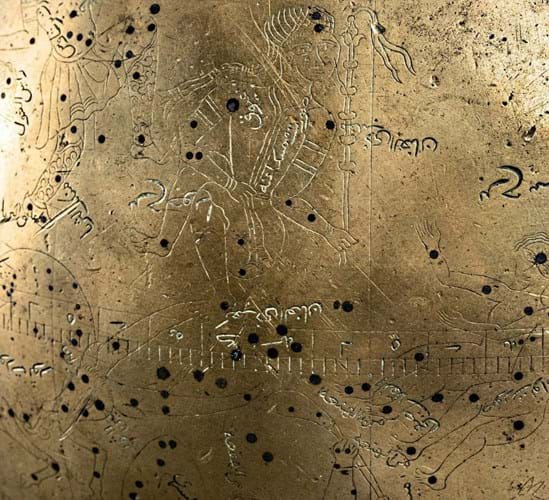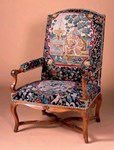The approximately 10in (25cm) brass sphere weighed around 8.8lb (4kg). It was a seamless cast, achieved by the lost wax or cire perdue method.
In accordance with Islamic astronomical tradition, the constellations with the engraved outlines of their personifications and the individual stars were based on the calculations published by the great 9th century astronomer Abd al-Rahman al-Sufi.
His Book of the Constellations of Stars provided the coordinates for the 1022 stars, marked on the Berlin globe by silver inlays; the names of the constellations were inscribed in Arabic.
The earliest known dated Islamic celestial globe was made in the late 11th century; the Berlin example could be dated to c.1670. It had been purchased by an art historian in the 1970s and was later inherited by a local collector who sold it to a dealer, who in turn consigned it to Bassenge.
The globe was in somewhat time-ravaged condition with several dents and scratches and was furthermore lacking a stand, which goes some way to explain the guide of €8000 at the auction on June 4.
Bidders from Germany, Hong Kong, the UK, US, France and the Arabian Peninsula obviously considered this example to be a valuable addition to the known pieces and drove the price into six figures during a 13-minute bidding battle.
At the close, two collectors were left to fight it out. Eventually the hammer fell at €235,000 (£209,800).
All in all, it is thought that only around 290 antique Islamic globes still exist.
£1 = €1.12
















